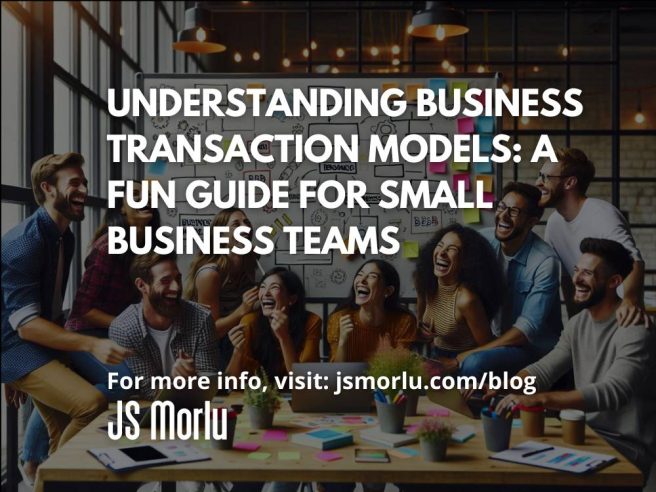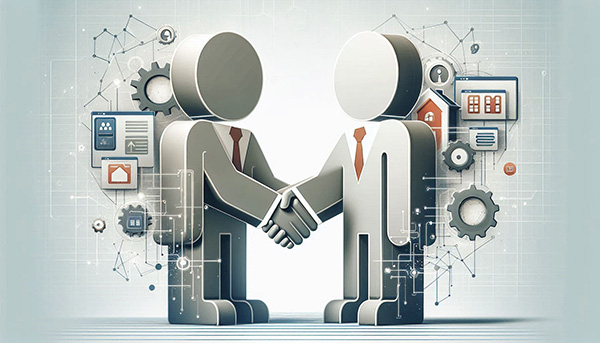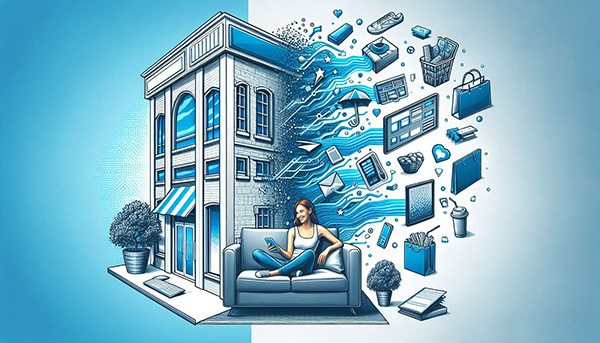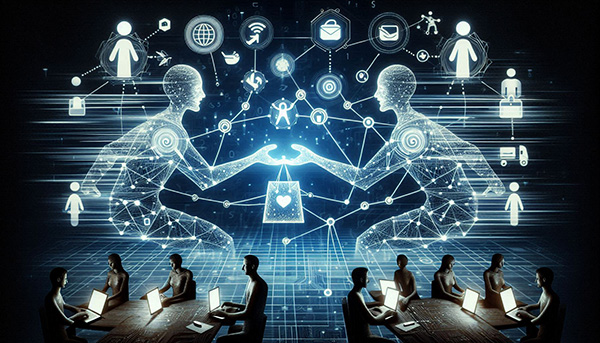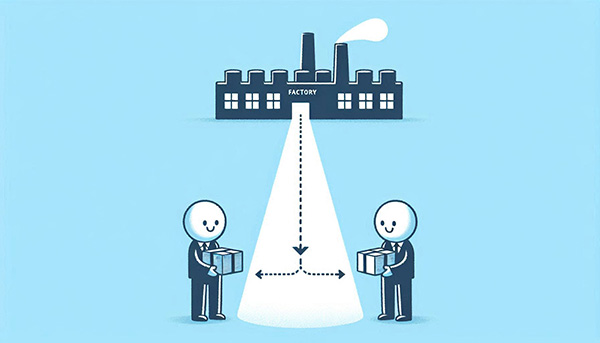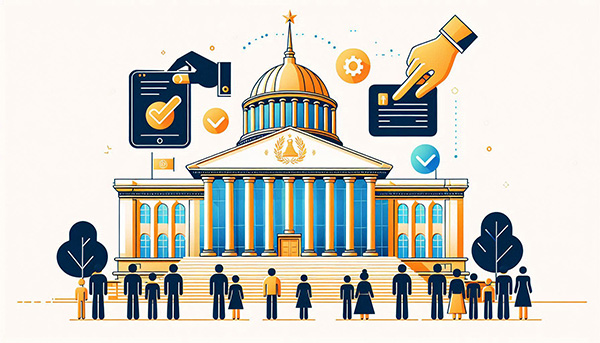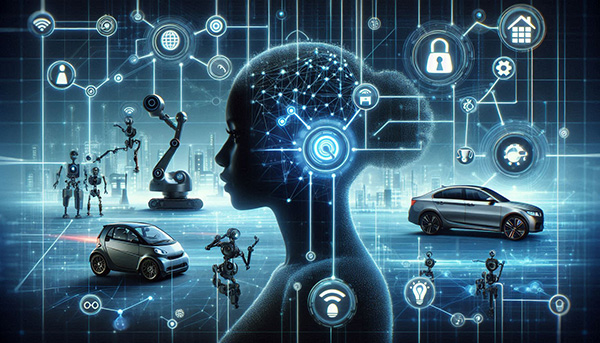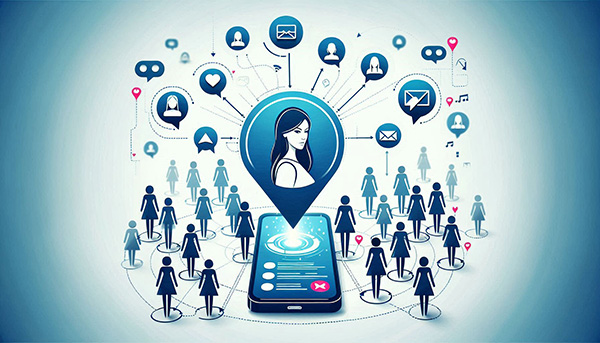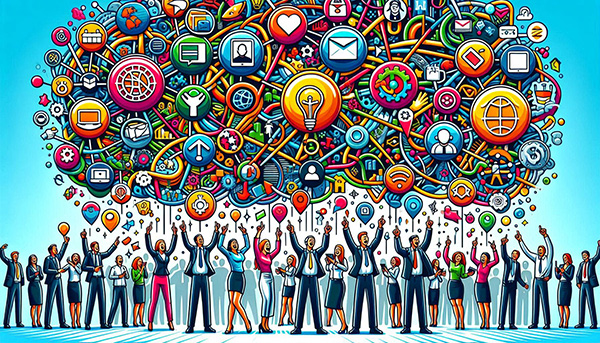By: John S. Morlu II, CPA
Hey there, future business moguls and office legends! Ready to explore the hidden gears that make the business world go round? Today, we’re jumping headfirst into the wild and wonderful world of business transaction models—a place where companies shake hands (sometimes virtually), make deals, and move millions of products, dollars, and yes, even pizza, all in the blink of an eye!
Now, before you roll your eyes and think, “Why should I care?“, let me stop you right there. Imagine you’re at a party (or a Zoom call if we’re being real) and someone drops the term “B2B” or “C2B.” What do you do? Smile and nod awkwardly while wondering if they’re talking about a new droid in Star Wars? Or maybe throw in a joke about how it sounds like a boy band? Not anymore, my friend! After this, you’ll be able to jump right in with real talk—and probably impress everyone at that party (or at least not look confused).
But seriously, understanding these models is super important whether you’re planning to run your own business, work in one, or just want to sound ridiculously smart on a first date. Think of these transaction models like the secret recipes for success—without them, businesses just wouldn’t work. They’re like the secret sauce in your favorite burger, the WiFi password you can’t live without, or the algorithm that recommends the next binge-worthy series on Netflix.
So grab your favorite snack, put on your most comfy hoodie, and let’s break it all down—piece by piece, deal by deal. You’re about to become a business genius without even realizing it. Let’s go!
1. B2B (Business-to-Business)
First up, we have B2B, which stands for Business-to-Business. Imagine two businesses having a friendly handshake (or maybe a high-five) instead of selling directly to customers. For example, Salesforce gives other businesses cool software to help them manage their customer relationships. And let’s not forget FinovatePro accounting software—it helps small businesses keep track of their money so they can focus on being awesome and profitable!
B2B can also include services like CreditReferencePro, which functions similarly to Experian by providing credit reporting for businesses. This helps businesses assess their creditworthiness when considering partnerships or loans, ensuring they make informed decisions.
Use Cases: Cloud services, software tools, raw materials, professional services, and even AP2 (Accounts Payable Automation) services that help businesses manage and pay their bills electronically. It’s like a superhero for accounts!
2. O2O (Online-to-Offline)
Next, let’s talk about O2O—Online-to-Offline. This is where the internet and the real world team up for some serious fun. Think of Uber Eats, which lets you order food from your favorite restaurant online and have it delivered right to your door. Or Instacart, where you can shop for groceries without ever putting on pants! O2O is all about making your life easier and tastier.
Use Cases: Food delivery, retail shopping, service appointments—basically, anything that makes your life more convenient and delicious!
3. B2C (Business-to-Consumer)
Now, let’s jump into B2C, or Business-to-Consumer. This is where businesses sell directly to you—the fabulous consumer! Think Netflix: you pay a monthly fee to binge-watch your favorite shows while lounging on the couch in your pajamas. B2C is all about making your dreams come true, one streaming service at a time.
Use Cases: E-commerce platforms, streaming services, and those fancy retail stores where you buy things you didn’t even know you needed.
4. B2G (Business-to-Government)
Have you ever thought about how businesses sell stuff to the government? That’s B2G! For example, Cisco provides high-tech networking solutions to government agencies, helping them keep everything running smoothly. Additionally, we have WageGuardian, which offers ghost-busting software that helps government agencies track employee performance and productivity. Pamissa offers specialized audit software designed for government use, ensuring compliance and transparency in public sector operations. And don’t forget about Recksoft, a reconciliation software that helps streamline financial processes for government entities. B2G is like a business in a tuxedo, shaking hands with the mayor and making things happen.
Use Cases: Technology services, infrastructure projects, consulting services—the serious stuff that keeps the world turning.
5. P2P (Peer-to-Peer)
Time to bring in P2P—Peer-to-Peer! This is where people connect directly, like best friends swapping video games or sharing secrets. For example, think about Airbnb—it lets you rent someone’s cool apartment while they’re off enjoying their vacation, turning you into a temporary local. Or what about Tinder? It’s all about connecting people for fun, whether you’re looking for a date, a new friendship, or just some interesting conversations!
And let’s not forget about the smooth operators of the financial world: Venmo, Cash App, and Mobile Money Apps. These make paying your friends back for that pizza they ordered last Friday quick and easy—no more awkward “Who owes what?” conversations. Just a tap, and boom! The debt is settled, friendships saved, and pizza devoured. P2P is all about keeping things personal, direct, and super convenient—whether it’s finding a place to crash, a person to hang out with, or a way to settle your snack tab!
Use Cases: Ride-sharing (Uber, Lyft), peer-to-peer payments (Venmo, Cash App), marketplace sales (Airbnb, Craigslist)—the world is your oyster!
6. M2P (Mobile-to-Person)
Next, we have M2P, or Mobile-to-Person. This is when businesses use your phone to keep you in the loop and make sure you’re always in the know. Ever gotten a text from your bank warning you about suspicious activity on your account? That’s M2P working its magic! Or remember those notifications from DoorDash telling you exactly when your food is arriving? It’s like having your own personal assistant who’s just really good at updates.
Another great example is Instacart—they’ll text you when your groceries are on the way, letting you know when you can expect them at your door. M2P is like your business bestie who’s always there to keep you informed, making sure you never miss a beat, whether it’s with your finances, your food, or your shopping!
Use Cases: Payment notifications, transaction alerts, appointment reminders, travel updates—keeping you in the know!
7. D2C (Direct-to-Consumer)
D2C stands for Direct-to-Consumer. This is when a business sells directly to you without any middlemen. Think about Tesla—they sell cars straight from their website, no dealerships involved. It’s like having a direct line to your favorite band; you get the music without any fuss. Another great example is Warby Parker, which sells glasses online directly to customers, skipping the traditional optical shops. You order, they deliver—simple as that! Businesses like this cut out the middlemen and go straight to the people.
Use Cases: Online retail, subscription services, and those personalized products that make you feel special.
8. B2E (Business-to-Employee)
B2E stands for Business-to-Employee. This is when businesses provide services directly to their employees to keep them happy, productive, and generally not plotting an office mutiny! Think about Workday, which is like an employee’s personal assistant, helping manage everything from payroll to benefits. It’s the behind-the-scenes superhero making sure everyone gets paid on time and knows what days they can take off to binge-watch Netflix.
Another great example is Slack—the communication tool that keeps everyone chatting, collaborating, and (hopefully) not sharing too many cat memes. And then there’s Zoom—now a workplace staple, allowing employees to stay connected, even if half of them are still in their pajamas during meetings. Happy employees mean a thriving business—everyone wins!
Use Cases: Employee benefits management, learning platforms, and internal communication tools—keeping the workplace fun and efficient!
9. G2C (Government-to-Citizen)
G2C stands for Government-to-Citizen. This is when the government provides services directly to you, the citizen. Think about IRS.gov in the U.S., where you can file your taxes online without having to stand in long lines at some government office. It’s like the government’s way of saying, “Hey, let’s make this easier for everyone!”
A more global example is India’s Aadhaar system, the world’s largest biometric ID program. Citizens can access a range of government services—like opening a bank account or getting subsidies—just with their Aadhaar number. G2C is all about making government services more accessible, so you can spend less time filling out paperwork and more time binge-watching your favorite shows (or, you know, something productive)!
Use Cases: Tax filing, voter registration, public service portals—making life a little easier for everyone.
10. G2B (Government-to-Business)
G2B stands for Government-to-Business, where governments provide services directly to businesses. It’s like the government saying, “Hey, we’re open for business too!” A great example is SAM.gov in the U.S., where businesses can register to work with the government, get contracts, and access federal procurement opportunities. It’s like a matchmaking service—except instead of dating, you’re landing that lucrative government contract.
Another well-known example is e-Procurement platforms used globally, like GeBIZ in Singapore. Businesses can bid on government contracts, from supplying office furniture to handling major infrastructure projects. It’s a win-win: the government gets what it needs, and businesses get the chance to grow. G2B helps businesses leap into new opportunities, whether you’re selling paper clips or building bridges!
Use Cases: Business registration, permits, government contracts—making sure everyone plays by the rules.
11. M2M (Machine-to-Machine)
Now let’s talk about M2M—Machine-to-Machine. This is when devices talk to each other without human help. It’s like a secret chatroom for machines, making everything smoother and more efficient without you lifting a finger!
For example, think about your Nest smart thermostat that automatically adjusts the temperature when you leave the house—your phone tells the thermostat you’re gone, and boom, energy is saved! Another great example is self-driving cars, like those developed by Tesla. The car’s sensors, cameras, and software all communicate to navigate the roads safely. Or consider smart factories, where machines on the production line communicate with each other to keep everything running seamlessly without human intervention.
M2M is all about creating a more connected world where devices handle the details, so you don’t have to!
Use Cases: Smart home devices, industrial automation, vehicle tracking systems—technology working together!
12. C2B (Consumer-to-Business)
Last but not least, we have C2B, or Consumer-to-Business. This is when consumers offer products or services to businesses, flipping the traditional model on its head. It’s like saying, “Hey, business, I’ve got something you need!”
A great example is Fiverr, where freelancers offer their skills—like graphic design, writing, or video editing—directly to companies. Another well-known C2B platform is Upwork, where businesses can hire freelancers for anything from software development to marketing services.
In C2B models, consumers (like you and me) take the reins, offering up our talents, products, or expertise, and businesses are more than happy to pay for them. It’s the perfect way for individuals to monetize their skills while businesses get specialized work done!
Use Cases: Freelancing, user-generated content, influencer marketing—putting consumers in the driver’s seat!
13. A2P—(Application-to-Person)
Let’s dive into the world of Application-to-Person (A2P) messaging! Imagine this as your friendly neighborhood delivery service, but instead of pizza, they’re delivering automated messages straight to your phone. A2P is all about businesses sending one-way messages to you using an application, like a mobile app or a website. So, no need to reply—just sit back and enjoy the info!
For example, picture this: You sign up for appointment reminders at your favorite hair salon. A few days before your cut and color, you get a friendly text reminding you, “Hey, don’t forget your hair appointment on Saturday! We’ll see you at 3 PM!” It’s like having a personal assistant who always remembers your important dates, but without the awkward small talk!
Or how about those fun, flashy texts from your favorite online store? You know the ones that say, “Flash Sale Alert! 50% off all shoes for the next hour!”? They’re designed to get you to act fast, like a superhero swooping in to save your wallet from overspending!
A2P messaging is also a lifesaver for bank alerts. Ever received a message saying, “Your transaction for $300 was successful”? It’s not just to keep you informed; it’s also there to make sure your money is safe and sound. You’re basically getting a high-five from your bank every time!
In short, A2P is like having a well-organized team of digital messengers who keep you in the loop with useful, timely info without expecting anything back. It’s efficient, it’s helpful, and hey, it makes life just a little bit easier!
Use Cases: Appointment reminders, promotional offers, account alerts—keeping customers in the loop and making their lives easier!
Conclusion
And there you have it, folks! We’ve taken a wild ride through the jungle of business transaction models, and now you’re basically a pro. Understanding these models is like having a superpower for small businesses—whether you’re selling shoes, software, or the next big idea, these strategies will help you thrive in today’s competitive environment. By using these models smartly, your team can streamline operations, wow your customers, and even discover whole new avenues for growth.
The beauty of knowing these models is that it’s like having a secret decoder for business success. Recognizing the quirks of each type—whether it’s B2B, C2C, or G2C—means you’ll make decisions that hit the bullseye every time. It’s like leveling up in a game, except the prize is your business thriving instead of just beating the next boss level!
So, the next time you’re at a party and someone casually drops “B2B” or “M2P,” you can jump in with, “Oh yeah, totally! Like how Slack connects employees or how Nest thermostats save energy!” You’ll leave them stunned, and maybe even inspire them to start their own business revolution. Who knew business models could be this fun?
Now, go out there, dazzle your friends, impress your colleagues, and take the world by storm with your new business smarts! Just don’t be surprised if people start coming to you for advice on everything from startups to smart fridges. After all, you’re basically a business guru now!
Author: John S. Morlu II, CPA is the CEO and Chief Strategist of JS Morlu, leads a globally recognized public accounting and management consultancy firm. Under his visionary leadership, JS Morlu has become a pioneer in developing cutting-edge technologies across B2B, B2C, P2P, and B2G verticals. The firm’s groundbreaking innovations include AI-powered reconciliation software (ReckSoft.com) and advanced cloud accounting solutions (FinovatePro.com), setting new industry standards for efficiency, accuracy, and technological excellence.
JS Morlu LLC is a top-tier accounting firm based in Woodbridge, Virginia, with a team of highly experienced and qualified CPAs and business advisors. We are dedicated to providing comprehensive accounting, tax, and business advisory services to clients throughout the Washington, D.C. Metro Area and the surrounding regions. With over a decade of experience, we have cultivated a deep understanding of our clients’ needs and aspirations. We recognize that our clients seek more than just value-added accounting services; they seek a trusted partner who can guide them towards achieving their business goals and personal financial well-being.
Talk to us || What our clients says about us

